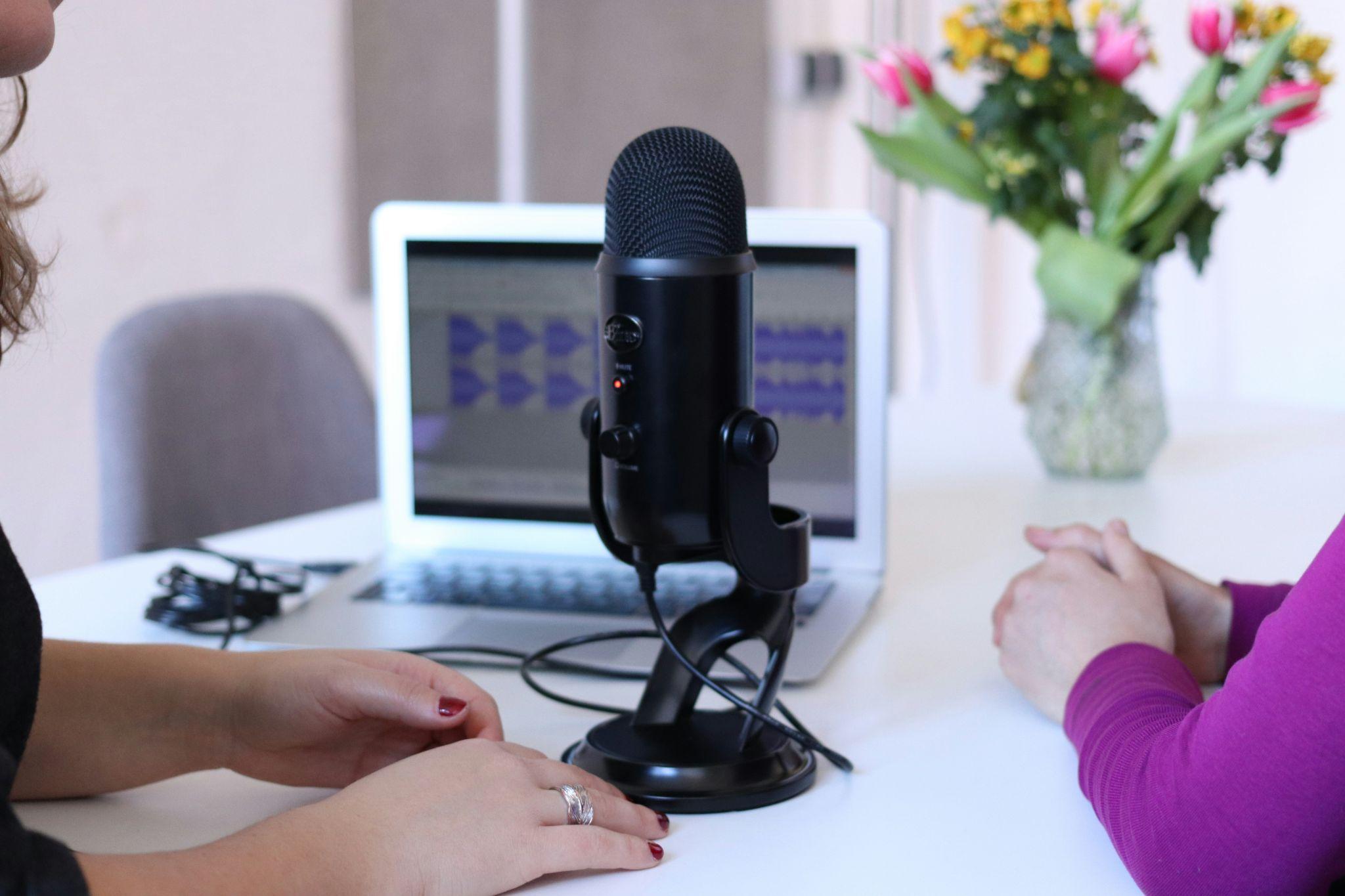
Our Addiction Resources
Navigating the world of addiction and recovery can be overwhelming. We’re here to provide clear, compassionate education and guidance. From practical advice for maintaining sobriety to informational guidance on the long-term effects of substance abuse, our content is a beacon of hope and understanding.
Our Team is Ready are ready to take your call
Call us Today!
or we can call you. Fill out form below
Our Blog

Top 5 Podcasts on Addiction Recovery
For those navigating the way toward addiction recovery, whether personally or as a concerned loved one, finding relatable and insightful resources can be a game-changer. Podcasts, in particular, offer a unique form of companionship and wisdom, blending personal stories with expert advice in a format that’s both accessible and engaging.
We’ve curated a list of top recovery podcasts that provide valuable perspectives, encouragement, and practical tips for anyone involved in the recovery process. Let’s explore these stories of recovery and discover how they can support you or your loved ones on the path to recovery.
1. The Addicted Mind Podcast by Duane Osterlind
What It’s About: Hosted by Duane Osterlind, a professional dedicated to helping those struggling with addiction, The Addicted Mind Podcast offers a deep dive into the psychological and emotional aspects of addiction. It features discussions with experts in the field of mental health and substance use disorders, as well as individuals who share their recovery stories, providing listeners with a well-rounded understanding of addiction from multiple perspectives.
Why Listen: This podcast excels in blending scientific insight with real-life experiences, making it a powerful resource for anyone looking to deepen their understanding of addiction and recovery. Duane Osterlind’s approach is both compassionate and informative, offering hope and practical strategies for overcoming addiction.
Whether you’re looking for advice on coping mechanisms, insights into the latest research, or simply need to feel less alone in your journey, The Addicted Mind Podcast is a valuable companion on the path to recovery.
2. Busy Living Sober by Elizabeth Chance
What It’s About: Elizabeth Chance, a recovery advocate and coach, brings her personal experience and vibrant energy to Busy Living Sober. This podcast focuses on breaking the stigma of life in recovery and living a joy-filled, sober life. Elizabeth and her guests discuss a variety of topics, including self-care, managing stress without alcohol, and finding joy in the small things, all aimed at encouraging listeners to lead a fulfilling sober life.
Why Listen: Busy Living Sober is ideal for anyone who seeks to redefine their life without alcohol. Elizabeth Chance’s positive and engaging approach inspires listeners to explore the joys of sobriety, offering practical advice and relatable stories that underscore the limitless possibilities of a sober lifestyle. If you’re in need of a motivational boost or are curious about how to navigate the challenges of sobriety with grace and fun, this podcast is a must-listen.
3. That Sober Guy Podcast by Shane Ramer
What It’s About: Shane Ramer brings his own experiences with sobriety to the forefront in That Sober Guy Podcast, creating an environment that’s both supportive and entertaining. This podcast tackles the journey of recovery with a mix of humor, honesty, and humility, discussing everything from daily struggles to long-term success stories in sobriety. Shane and his guests offer insights into how to live a sober life without losing your sense of humor or joy.
Why Listen: For those who believe laughter can be the best medicine, That Sober Guy Podcast offers a refreshing take on the recovery process and mental health. His candid discussions and humorous storytelling serve as a source of support and inspiration, proving that sobriety doesn’t have to mean taking life too seriously. It’s a great choice for anyone looking for relatable content that can bring a smile to their face while also offering meaningful insights into the sober lifestyle.

4. A Sober Girls Guide by Jessica Jeboult
What It’s About: Jessica Jeboult, a sobriety coach and lifestyle blogger, hosts A Sober Girls Guide, a podcast for women navigating sober life. The podcast covers a wide spectrum of topics relevant to modern women in recovery, including relationships, self-care, career development, and navigating social situations without alcohol. Jessica and her guests offer strategies, personal insights, and encouragement at every stage of their sobriety journey.
Why Listen: This podcast is a treasure trove of empowerment for women seeking guidance and community in their sober journey. Jessica Jeboult’s approachable style turns each episode into a wise, supportive conversation.
A Sober Girls Guide addresses the unique challenges women face in recovery, offering actionable advice and inspiring stories that resonate deeply with female listeners. For any woman looking to strengthen her sobriety while embracing a holistic approach to wellness and personal growth, this podcast is an invaluable resource.
5. Recovery Happy Hour by Tricia Lewis
What It’s About: Tricia Lewis, the host of Recovery Happy Hour, celebrates the lighter side of recovery, focusing on the joys and accomplishments that come with a sober lifestyle. The podcast debunks myths about sobriety being dull and dreary, instead highlighting the vibrant, fulfilling life that awaits those who choose to live alcohol-free.
Through interviews with individuals who have transformed their lives through sobriety, Tricia explores a variety of topics related to happiness, success, and personal development in recovery.
Why Listen: Recovery Happy Hour is perfect for anyone needing a reminder of the positive changes sobriety can bring. Tricia Lewis’s optimistic and relatable approach makes each episode both enlightening and enjoyable. Listeners will find a wealth of inspiration in the stories shared, showcasing the myriad ways life can improve post-addiction.
If you’re seeking a podcast that focuses on the benefits and possibilities of sober living after addiction treatment, Recovery Happy Hour will lift your spirits and broaden your perspective on what recovery can offer.
Find Support for Sobriety With Lumina Recovery
Each of these podcasts offers a unique perspective on addiction and recovery, providing listeners with a rich tapestry of advice, stories, and inspiration. Whether you’re in the midst of your recovery journey or supporting someone who is, incorporating these podcasts into your routine can offer comfort, education, and a sense of community.
Remember, the path to recovery is as much about healing the mind and spirit as it is about overcoming physical dependencies. These podcasts remind us that with the right support and resources, transformation is not just possible—it’s within reach.
At Lumina Recovery, we offer detox services for those just starting their recovery journey and dual diagnosis programs for those wanting to work on their mental health.
Don’t hesitate to reach out to our team at Lumina Recovery today.

8 Books on Addiction to Read on Your Recovery Path
Whether you are facing this challenge yourself or watching a loved one navigate this path, understanding and support are crucial on the steps toward recovery from drugs and alcohol.
Literature and stories of addiction can be a comforting companion through this process, offering insights, shared experiences, and guidance that can illuminate the way forward.
There are so many page-turning books that touch on various aspects of addiction and recovery. These book recommendations have been chosen for their ability to inspire, educate, and resonate with readers who are seeking solace and understanding in their journey.
1. The Unexpected Joy of Being Sober by Catherine Gray
In The Unexpected Joy of Being Sober, Catherine Gray candidly recounts her personal struggle with alcohol use disorder and the transformative journey towards sobriety. Gray combines her own experiences with interviews and research, offering an insightful look into the social pressures of drinking, the stigma surrounding sobriety, and the profound benefits of living alcohol-free.
This book stands out for its relatable storytelling and practical advice. Gray’s approach demystifies sobriety, presenting it as an achievable and rewarding goal. Readers will find encouragement in her honest account, gaining confidence to face their challenges. The book also discusses the positive impacts of sobriety on mental health, relationships, and overall well-being.
2. Drinking: A Love Story by Caroline Knapp
Drinking: A Love Story is Caroline Knapp’s powerful and moving autobiography that delves into her 20-year love affair with alcohol. Knapp provides a raw and honest account of her personal story through the depths of addiction, exploring the intricate relationship she had with drinking and the impact it had on her personal and professional life.
Knapp’s narrative is both poignant and enlightening, making Drinking: A Love Story a standout read for anyone touched by alcohol addiction. Her ability to articulate the nuanced experiences of dependency, denial, and the struggle for sobriety resonates deeply with readers.
This book is particularly valuable for its perspective on the often-overlooked aspects of addiction, such as the social pressures to drink, the internal battles with self-worth, and the journey towards self-discovery and recovery.
3. A Happier Hour by Rebecca Weller
A Happier Hour is Rebecca Weller’s heartfelt memoir about her battle with alcohol and her path to sobriety. Weller shares the highs and lows of her journey, exploring the impact of alcohol on her health, relationships, and career. Her story is a testament to the power of resilience and the pursuit of a more fulfilling life without alcohol.
Weller’s narrative is both touching and inspiring. Her book resonates with anyone questioning their alcohol consumption or seeking a sober lifestyle. It offers a personal look into the challenges and triumphs of sobriety, encouraging readers to envision a happier, healthier future for themselves.
4. Beyond Addiction: How Science and Kindness Help People Change by Jeffrey Foote, Carrie Wilkens, & Nicole Kosanke
Beyond Addiction redefines the approach to helping a loved one overcome addiction. The authors, leading experts in addiction research, propose methods grounded in science, compassion, and understanding. This guide shifts the focus from confrontation to support, illustrating how positive reinforcement and empathy can lead to lasting change.
This book is a crucial resource for friends and family members of individuals struggling with addiction. It challenges traditional notions of intervention, offering a more humane and effective path to recovery. By emphasizing kindness and support, Beyond Addiction provides readers with practical strategies to assist their loved ones in a manner that strengthens relationships and fosters mutual respect.

5. Twenty-Four Hours a Day by Richmond Walker
Twenty-Four Hours a Day is a cornerstone in recovery literature, offering daily meditations, thoughts, and prayers designed to support individuals in their sobriety journey. Richmond Walker has compiled these reflections to provide daily guidance and inspiration, drawing from his own experiences and the wisdom of various spiritual teachings.
This book serves as a daily companion for those seeking spiritual support and mindfulness in their recovery process. Its format encourages regular reflection and meditation, fostering a sense of peace and resilience. Readers will find solace and motivation in the daily passages, which are geared towards nurturing a spiritually fulfilling sober life.
6. Chaos to Clarity: Seeing the Signs and Breaking the Cycles by Sylvia Clare
In Chaos to Clarity, Sylvia Clare explores the cyclical nature of addiction and the transformative power of awareness and change. Clare provides insights into recognizing destructive patterns and offers guidance on breaking free from these cycles to achieve clarity and healing. The book delves into the psychological and emotional aspects of addiction, emphasizing self-discovery and personal growth.
This book is particularly valuable for individuals who feel trapped in repetitive patterns of behavior. Clare’s approach to recognizing and changing these cycles offers readers a path to self-awareness and recovery from substance use disorders. It’s an empowering read that encourages taking control of one’s life and moving from chaos to clarity.
7. The Rewired Life by Erica Spiegelman
Erica Spiegelman’s The Rewired Life focuses on creating a balanced and healthy lifestyle after treating addiction. The book covers a wide range of topics, including nutrition, exercise, sleep, and managing stress, as well as building meaningful relationships and setting personal goals. Spiegelman emphasizes the importance of holistic wellness in sustaining recovery and achieving a fulfilling life.
For those looking to rebuild their lives in all aspects, The Rewired Life offers a comprehensive guide to holistic recovery. Spiegelman’s emphasis on wellness beyond just sobriety encourages readers to pursue a well-rounded and healthy lifestyle, making this book essential for anyone committed to long-term recovery and personal growth.
8. Beautiful Boy: A Father’s Journey Through His Son’s Addiction by David Sheff
Beautiful Boy is David Sheff’s heart-wrenching account of his son Nic’s descent into methamphetamine addiction. This memoir offers a unique dual perspective: it chronicles Nic’s harrowing struggle with substance abuse and portrays David’s relentless efforts to understand and help his son. Sheff combines personal narrative with exhaustive research on the nature of addiction, treatment options, and the psychological impact on both the addict and their family.
Beautiful Boy provides an invaluable perspective for parents and family members navigating the tumultuous waters of a loved one’s addiction. Sheff’s candid and compassionate storytelling offers insight into the often overlooked emotional and psychological toll on families. This book serves as a source of comfort and understanding, offering solace in its honest depiction of the challenges and the reminder that no one is alone in this struggle.
Get the Support You Need With Lumina Recovery
Each of these books offers a unique lens through which to view addiction and recovery. Whether you’re in the early stages of contemplating change, actively seeking methods to overcome addiction, or supporting a loved one through their recovery, these reads provide valuable insights, encouragement, and understanding.
Lumina Recovery offers individual and family therapy that can provide support for all those affected by addiction. Remember, the path to recovery is personal—literature can be a powerful tool in finding your way through the maze of addiction towards a hopeful and healthier future.
To learn more about our services and resources, contact our team today.

Focusing on Healthy Habits in Recovery
Exiting rehab is a moment of exhilaration. You’ve completed your program, achieved sobriety, and are optimistic for the future, ready to embrace a world of new opportunities.
However, excitement is often paired with apprehension. The challenge is to let go of self-destructive habits and adopt healthier ones. The structured environment of a treatment center supports your sobriety, but the real world presents triggers and temptations that could undermine your progress.
Maintaining sobriety post-rehab means developing healthy habits and routines. These are essential for managing your condition, staying motivated, and empowering yourself on your recovery journey. The goal is to avoid reverting to old patterns and a dysfunctional lifestyle.
Advantages of Structure and Routine in Recovery
Establishing positive routines is vital for maintaining sobriety and well-being in addiction recovery. These routines offer structure, stability, and a sense of purpose. Let’s delve into their importance:
Creating stability and security. Adopting a new routine helps replace fear with stability. Research indicates that it takes approximately 66 days to form new habits and break old ones.1 Over time new habits become automatic and familiar, helping you replace old destructive patterns with healthier practices needed for long-term sobriety.
Cultivating self-control. When facing temptations, self-discipline is your ally. Strengthen willpower by resisting minor urges, like excessive late nights or binge eating. This fortification of self-control across life’s facets prepares you to resist the urge to use substances.
Enhancing mental health and self-esteem. Substance use disorders often impact self-esteem. Integrating constructive routines with therapy and affirmations strengthens mental health and boosts self-confidence. Envision the confidence boost from morning workouts or cooking for friends. These triumphs, rooted in a consistent schedule, foster control and a sense of achievement. These positive feelings are crucial when overcoming vulnerabilities, especially when moving away from substances that previously masked or neglected self-esteem concerns.
Preventing isolation and boredom. Post-rehab, the inclination to isolate as a way to avoid social triggers can be strong. Yet, isolation and boredom are significant relapse risks in long-term recovery. Unstructured time and idleness can be dangerous. It’s essential to establish a routine. Staying engaged with therapy, hobbies, and social visits not only enriches your life but also helps you avoid circumstances that could trigger a relapse.
9 Key Elements to Building Healthy Habits in Recovery
It’s vital to navigate a personalized schedule during recovery. Everyone’s journey is unique, and consulting with your counselor is key—they can tailor routines to fit your specific needs. Crafting a daily schedule that balances work, rest, and leisure is essential to prevent relapse. Below are the core elements to building healthy habits:
- Exercise: Make physical activity a staple of your daily or weekly schedule. It’s not only beneficial for your overall health—it also stimulates the release of endorphins, neurotransmitters in the brain that act as mood elevators to help manage stress.
- Personal Hygiene and Relaxation: Elevate your daily regimen beyond the essentials of bathing and dental hygiene. Consider the rejuvenating effects of a sauna or steam bath to unwind and relax. These practices provide therapeutic benefits, contributing to a serene state of mind.
- Sleep: Cultivating a consistent sleep schedule is key to aligning with your body’s natural rhythms. Adequate rest is essential for both physical rejuvenation and mental clarity. If insomnia persists, seek advice from your healthcare provider or counselor for tailored strategies to improve your sleep quality.
- Balanced Meals: Committing to a diet of nutritious meals is a cornerstone of restoring your health during recovery. If your past includes a pattern of unhealthy eating, it may be beneficial to consult a nutritionist. Proper nutrition can significantly affect your mood and energy levels, helping to prevent depression and sleep issues. A well-planned, healthy diet, rich in vitamins and minerals, supports both physical and mental recovery.
- Emotional Well-Being: Nurturing your emotional health is as important as physical health in recovery. Engaging in practices such as yoga and meditation can significantly improve mental clarity and reduce stress. Dedicating time to religious studies or spiritual journaling can offer a sense of peace and purpose. Moreover, immersing yourself in nature can be incredibly healing.
- Continued Support Meetings: Engaging with support groups such as NA or AA provides a platform for peer support, shared experiences, and mutual encouragement. They foster a welcoming environment where individuals can find camaraderie and a sense of community.
- Therapists and Counselors: Persist in your collaboration with mental health professionals. These experts are instrumental in uncovering and treating the psychological and emotional roots of addiction. Regular sessions provide a safe space to explore personal challenges, develop coping strategies, and ensure a supportive framework.
- Work and Study Commitments: Balancing your professional or academic responsibilities with your personal life is a key aspect of a healthy routine. If you’re employed or pursuing education, it’s important to design a schedule that accommodates these commitments. Striking the right balance ensures that you can meet your work or study obligations while still having time for self-care, relaxation, and social activities. This equilibrium is essential for overall well-being and helps prevent burnout.
- Family and Friends: Building a strong support network is essential in recovery, it’s a powerful source of strength and encouragement. Surround yourself with friends and family who respect and support your sobriety. Regular interactions with supportive individuals can offer accountability and emotional backing. It’s important to be selective—prioritize relationships with people who lead substance-free lifestyles to minimize the risk of relapse.

Achieving balance and maintaining sobriety are continuous journeys. Be patient, seek support, and take pride in your progress.
Embrace professional advice, lean on your support network, and focus on self-care for a rewarding post-rehab life.
Professional Support for Sustainable Recovery at Lumina Recovery
Embarking on a journey to lasting sobriety? Lumina Recovery is here to guide you. We offer comprehensive outpatient programs and telehealth services, enabling you to receive expert care from the comfort of your home through secure video and phone consultations.
Our seasoned specialists will perform a thorough initial assessment to tailor a recovery plan that addresses your individual needs.
If you’re navigating the challenges of post-rehab sobriety or seeking a structured recovery roadmap, rest assured, that you’re not navigating this path alone.
Take the first step in seeking support by contacting our team of professionals today.
Sources:

How to Stay Sober at Social Events
If you are in recovery from substance abuse, you may find it challenging to attend social events where alcohol or drugs are present. You may feel tempted, pressured, or awkward about not joining in the drinking or using. However, you don’t have to miss out on the fun or isolate yourself from friends and family. You can still have a fulfilling and enjoyable time at social events because sobriety is not just about avoiding relapse—it’s about confidently living a sober life.
By being prepared, self-aware, and communicative, you can learn to navigate social scenarios while on your recovery journey. There may be triggers, temptations, and stressors that occur at social events along the way. Still, these can be combated by formulating a solid plan that can be put in place in any social situation. This plan will be crucial for maintaining your commitment to sobriety.
Here are some tips to help formulate a personal game-changer plan to help you stay sober at social events.
Prepare Mentally Beforehand
Make a decisive commitment. Make a firm decision beforehand that you will not drink or use drugs at the event. Reinforce this resolve in your mind.
Recall past experiences. Keep the memory of your last drinking or drug use fresh. Reflect on how it ended poorly.
Practice mindful meditation. Try meditation and focus on deep breathing. Visualize yourself confidently enjoying the party, socializing, and engaging in conversations without relying on alcohol or drugs.
Acknowledge temptations. Be realistic about potential temptations and triggers. Create a personal list of these triggers (e.g., seeing someone using, a favorite song, specific emotions, stimuli, or a specific time of day). Plan responses and strategies to manage or avoid them.
Polish your social skills. Understand that it’s acceptable to step away from conversations when necessary to extricate yourself from potentially hazardous situations. Politely express appreciation for chats and excuse yourself calmly. For instance, say “It was great talking to you! I’ll catch up later” or “I need to greet a few more people.”
Seek support. If you’re still feeling uncomfortable or nervous, consider attending a meeting beforehand. Connect with like-minded sober friends who can offer tips and boost your confidence.
Plan an Entrance Strategy
Buddy System: Bring along a friend from AA or NA who can provide encouragement and hold you accountable.
Virtual Support: Arrange to text or video chat with a trusted friend or family member throughout the evening. Regular check-ins can help you stay on track.
Sponsor Check-Ins: Set up hourly calls with your sponsor. Their guidance can be invaluable.
Preemptive Request: If waiters serve drinks and canapes, ask the host in advance to brief them not to offer you alcoholic beverages. It might feel awkward, but honesty is crucial to avoid relapse.
BYO (Bring Your Own): Carry a water, juice, or energy drink in your bag. This is especially helpful if non-alcoholic drinks are scarce. Plus, it keeps you away from the bar, where you may not want to linger.
Remember, prioritizing your well-being is essential.

Master the Art of Saying No
As you mingle, always keep a drink in your hand—chances are people won’t offer you one. If you find yourself responding to inquiries about why you don’t drink, remember that you are socializing on your terms. You don’t need to justify your choices regarding drugs or alcohol. It’s your personal decision. Keep your explanation simple:
- I’m on a strict diet.
- I don’t like the taste of alcohol.
- I’m the designated driver.
- I’m not allowed to drink alcohol due to my medication.
By asserting your decision not to drink, you can feel empowered to enjoy the festivities while embracing your sobriety.
Get Involved in the Fun
Indulging in substances like drugs or alcohol to ease inhibitions and social anxieties during social gatherings often leads to a hazy recollection of events the following day. The true delight of sobriety lies in fully embracing and savoring the authentic fun!
Here are some ideas on how to unleash your inner party person and have a blast without using substances in a social setting:
- Discover the rhythm of the dance floor, be a carefree soul, and sway to your own beat—try out different moves not caring what others think.
- Sample every hors d’oeuvre, savoring a symphony of flavors.
- Immerse yourself in genuine conversations, diving into the depths beyond small talk. Forge connections with newfound friends by sharing experiences and ideas.
- Seek out a gathering of inquisitive minds, where lively debates about intriguing topics and thought-provoking ideas fuel your curiosity and hold your attention.
Above all, maintain an active pace, stay occupied, and immerse yourself in various activities… and you’ll uncover the true essence of reveling in a sober party!
Plan an Exit Strategy
Drive yourself. Whenever possible, drive yourself to the event. Keep your car keys within reach, ready to leave promptly if any uncomfortable situations arise. Trust your instincts—if something feels off or temptation overwhelms you, leave without hesitation.
Set up alternative transportation. If you don’t have access to a car, let someone close to you know that you might call them for a lift. Save the contact information for Uber and local taxi companies in your phone. These services can serve as reliable backups when needed. Having alternative transportation options ensures you’re never stuck without a way to get home.
Make a graceful departure. If circumstances become overwhelming, exit gracefully. Prioritize your recovery and well-being above all else.
Get Support for Staying Sober in Social Situations With Lumina Recovery
If you or a loved one are facing challenges in maintaining sobriety during social events, remember that you’re not alone on this journey. Seeking help and support is essential.
At Lumina Recovery, we offer intensive outpatient programs (IOPs) that enable individuals to stay at home or in a sober living facility while participating in part-time therapeutic services.
These programs equip participants with essential tools and coping strategies, empowering them to navigate social gatherings without relying on alcohol or drugs. Simultaneously, they can maintain their daily routines and responsibilities without turning to substance use.
There’s no shame in seeking additional assistance if support group meetings alone aren’t sufficient to maintain your sobriety.
Take the first step in seeking support by contacting our team of professionals today.

Boredom and Recovery: Avoid Relapse
One less acknowledged yet significant challenge after addiction treatment is boredom. Coping with boredom is not just a minor inconvenience, but it can often lead to relapse when in recovery from addiction.
Understanding the relationship between boredom and relapse is crucial for anyone navigating the path to recovery or supporting a loved one through this process.
Boredom in Recovery
In the context of addiction recovery, feelings of boredom can emerge as a critical issue because they represent a stark contrast from the previously engaged or even chaotic lifestyle associated with substance use disorders.
The routine and structure of recovery can seem dull in comparison, leading to feelings of restlessness and dissatisfaction. Without the constant stimulation or escape that substances provide, individuals may struggle to find meaning and enjoyment in their new, sober lives.
This void when feeling bored can create a dangerous vacuum, making the idea of relapsing more appealing as a means to fill the emptiness. Recognizing the role of boredom opens the door to strategies designed to combat it effectively, thereby reducing the risk of relapse.
10 Strategies to Combat Boredom in Recovery
Overcoming boredom is pivotal in the recovery process, and there are several strategies that individuals can employ to navigate this challenge effectively. Here are some key approaches to consider:
1. Develop New Hobbies and Interests
Embracing new hobbies and interests is crucial in filling the void left by drugs and alcohol. This exploration not only offers a distraction but also aids in rediscovering or discovering passions that contribute to a sense of identity beyond addiction.
Whether it’s painting, hiking, coding, or playing an instrument, these activities can provide a new source of excitement and fulfillment from boredom in addiction recovery. The key is to try various activities to see what resonates with you, allowing for a natural discovery of what brings joy and satisfaction.
2. Establish a Routine
Creating a structured daily schedule introduces a sense of normalcy and purpose that can be missing in early recovery. A well-planned routine includes dedicated time for work or school, self-care, hobbies, and social activities, ensuring a balanced lifestyle.
This structure helps to minimize free time that can lead to boredom and, potentially, relapse. It’s important to include variety within your routine to keep things interesting and to make adjustments as your interests and commitments evolve.
3. Exercise Regularly
Incorporating regular physical activity into your recovery plan offers numerous benefits. Exercise not only improves physical health but also boosts mental health by reducing symptoms of depression and anxiety.
Activities like walking, cycling, swimming, or team sports can also provide a sense of achievement and are opportunities to meet others with similar interests. The key is to find an activity you enjoy so that it becomes a rewarding part of your day, not a chore.
4. Volunteer Your Time
Volunteering is a powerful way to combat boredom and enhance your sense of purpose and self-worth. By giving back to the community, you can connect with others, build new skills, and even explore potential career paths.
Whether it’s helping out at a local shelter, participating in community clean-ups, or offering your skills to a non-profit, volunteering provides a productive outlet for your time and energy, making you feel part of something larger than yourself.
5. Learn New Skills
Pursuing education or learning new skills can dramatically enrich your life during recovery. This pursuit not only keeps your mind occupied but also builds your self-esteem as you achieve new milestones.
You might consider taking courses related to your career, learning a new language, or exploring creative writing. Online platforms and community colleges offer a wide range of courses that cater to different interests and schedules. This continuous learning can open up new opportunities and hobbies, making everyday life more engaging and less monotonous.

6. Socialize in Supportive Environments
Building and maintaining a supportive social network is invaluable in recovery. This means spending time with friends and family who respect your journey towards sobriety and avoid substance use themselves.
Additionally, engaging in sober activities and events can help you meet new people who share similar values and lifestyles. Support groups and recovery meetings provide not only a platform for sharing experiences and receiving encouragement but also an opportunity to make connections with individuals who understand the challenges of recovery.
Cultivating these relationships can help fill your social calendar with enjoyable, substance-free activities that ward off boredom.
7. Practice Mindfulness and Meditation
Mindfulness and meditation offer profound benefits in managing boredom and the underlying emotions that might trigger it. By fostering a practice of present-moment awareness, you learn to observe your thoughts and feelings without immediate reaction, reducing the impulse to turn to addictive behaviors for escape or stimulation.
Regular practice can enhance your emotional resilience, helping you to remain centered and calm in the face of boredom or stress. There are many resources available, from apps to community classes, to help beginners learn these practices.
8. Set Goals and Celebrate Milestones
Goal setting is a powerful tool in recovery, providing clear targets to strive for and a sense of direction. Goals can range from personal achievements like improving physical health or learning a new skill to professional ambitions such as advancing in your career or education.
Celebrating milestones, big and small, reinforces your progress and can be a source of motivation and pride. These celebrations can be personal rewards or shared with your support network, serving as reminders of how far you’ve come and the positive outcomes of maintaining sobriety.
9. Seek Professional Help When Needed
It’s important to acknowledge when you might need extra support in your recovery journey. If boredom becomes overwhelming or if you find it difficult to engage in activities that once brought you joy, reaching out to a therapist or counselor can provide you with the tools to navigate these challenges.
Professionals specializing in addiction recovery can offer personalized strategies, support, and accountability, helping you to address the root causes of your boredom and find healthy ways to fill your time.
10. Embrace Creativity
Engaging in creative activities provides an outlet for expressing thoughts and emotions that might be difficult to articulate. Whether it’s through painting, writing, music, or any other form of creative expression, these activities can be incredibly therapeutic and fulfilling
They offer a way to explore your feelings, reduce stress, and connect with yourself on a deeper level. Additionally, the process of creating something can be a source of pride and accomplishment, further enriching your recovery experience.
Avoid Relapse With Lumina Recovery
Boredom in recovery is more than a fleeting feeling—it’s a complex challenge that requires attention and action. By understanding its potential impact on relapse and implementing strategies to stay engaged and fulfilled, individuals in recovery can navigate this obstacle more effectively.
Lumina Recovery offers different addiction type programs and group therapy to help those avoid relapse. Remember, every step taken to combat boredom is a step closer to a resilient, sober life.
Call us today to learn more about how we can help you or your loved one.

How Important Are Values in Recovery?
Recovery from addiction touches the very core of an individual’s belief system and values. Values, the guiding principles in our lives, play a crucial role in shaping our decisions, behaviors, and ultimately, our path to recovery.
Understanding and embracing these values can offer strength and direction when navigating the complexities of overcoming addiction. Finding your values in the recovery process is a significant part of the journey and integrating those values can lead to a healthy, substance-free life.
5 Roles of Values in Recovery
Struggling with addiction affects the spirit, body, and mind. At the heart of this transformative process are one’s values—the deeply held beliefs and principles that give meaning to our lives. Understanding and embracing these values is essential for a successful recovery. Here’s why:
1. Guiding Light in Times of Darkness
Recovery is fraught with challenges, temptations, and setbacks. In these moments of vulnerability, values serve as a guiding light, offering direction and purpose.
Values like integrity and honesty can encourage individuals to stay true to their recovery path, even when the road gets tough. By aligning actions with core values, individuals cultivate a sense of self-respect and a commitment to personal growth, which are vital for overcoming obstacles.
2. Foundation for Personal Growth
Addiction often leads individuals away from their true selves, causing them to act in ways that contradict their core beliefs. Recovery provides an opportunity to rediscover and reconnect with these lost values, laying a foundation for personal growth.
Values such as compassion, empathy, and resilience become cornerstones upon which individuals can build a new, fulfilling life. Embracing these values fosters self-improvement and encourages a proactive approach to recovery and beyond.
3. Strengthening Relationships
Values play a crucial role in shaping how individuals interact with others. In the journey of recovery, rebuilding trust and mending relationships are paramount.
Values such as empathy, respect, and forgiveness guide individuals in fostering meaningful connections with family, friends, and support groups. These strengthened relationships offer support, understanding, and accountability, which are indispensable in maintaining sobriety.
4. Motivation for Change
A desire to align with one’s values often motivates recovery. Recognizing that addiction is at odds with values such as health, family, and self-control can be a powerful catalyst for change.
Throughout the recovery process, revisiting these values can reignite motivation, helping individuals to persevere through the challenges of withdrawal, therapy, and lifestyle changes.
5. Cultivating a Sense of Purpose
Values are integral to developing a sense of purpose, which is a key factor in sustaining long-term recovery. By identifying and pursuing goals that reflect one’s values, individuals find deeper meaning in their daily activities and choices.
This sense of purpose not only enriches life but also serves as a buffer against relapse, as individuals are more likely to resist temptation when they are focused on achieving goals that hold personal significance.
Discovering Personal Values
Identifying your core values is a pivotal step in your recovery journey. These values act as your inner compass, guiding you towards actions and decisions that resonate with your true self. Here’s how you can embark on the journey of discovering your personal values:
Introspection and Self-Exploration
Take time for quiet reflection. Ask yourself what truly matters to you. Think about times when you felt most alive, fulfilled, or proud of yourself.
These moments can reveal your deepest values. Questions like “What was I doing?” and “Why did it feel significant?” can uncover values hidden beneath these experiences.
Journaling and Visualization
Keeping a journal can be a powerful tool for self-discovery. Write about experiences that brought you joy, satisfaction, or a sense of achievement. Through this, patterns will emerge that highlight your core values.
Visualization can also be a potent method. Imagine your ideal life in recovery. What values are you living by in this vision? Writing down these reflections can solidify your understanding of what values are most important to you.
Value Cards and Lists
Using value cards or lists can be a practical approach to identifying your values. Sort these cards or items on the list in order of importance to you. This exercise forces you to prioritize and make tough decisions, which in turn, clarifies what you truly value most.
Feedback From Others
Sometimes, it’s challenging to see ourselves clearly. Close friends, family members, or mentors can offer insights into what values they see you embodying. Their observations can help you recognize values you might not have identified on your own.

Implementing Values in Recovery
Once you’ve identified your core values, the next step is to integrate these principles into your life. Here’s how you can live in alignment with your values during recovery:
Set goals with values in mind. With your values as a foundation, set specific, measurable, achievable, relevant, and time-bound (SMART) goals that reflect these values. If one of your values is health, a goal might be to engage in physical activity for 30 minutes daily. Aligning your goals with your values ensures that your efforts lead you toward a life that feels meaningful and fulfilling.
Have daily practices and rituals. Incorporate your values into daily habits and rituals. If community is a value, make it a point to connect with someone every day, whether through a phone call, a meeting, or a social activity. These small, daily actions reinforce your values and gradually shape your life to reflect them more fully.
Try mindfulness and reflection. Practice mindfulness and regularly reflect on your actions and decisions. Ask yourself if they align with your values. Being mindful about living according to your values helps you stay on track with your recovery and personal growth. Regular reflection can also help you adjust your actions as needed to better align with your values.
Overcome challenges using values. Recovery is filled with challenges and setbacks. In these moments, leaning on your values can provide strength and direction. For instance, if integrity is a value, remind yourself of the importance of being true to your recovery journey, even when it’s difficult. Values can serve as a source of motivation and resilience, helping you navigate through tough times.
Seek alignment in all aspects of life. Look for ways to align your values with all aspects of your life—work, relationships, personal growth, and hobbies. When your life is in harmony with your values, you’ll find greater satisfaction and purpose. This alignment supports a stronger and more resilient recovery process.
Find Your Values With Lumina Recovery
Values are not just abstract concepts but are vital tools in the journey of recovery. They offer guidance, motivate positive change, and support the development of a fulfilling, sober life.
Discovering and implementing personal values can transform the recovery process into a journey of personal growth and self-discovery.
Lumina Recovery provides individual therapy and dual diagnosis treatment where the identification of values is encouraged.
To learn more, reach out to our team of professionals today for yourself or a loved one.

6 Sober Hobbies to Explore
Embracing sobriety is a significant step towards reclaiming your life and discovering the joys that substance abuse may have shadowed. It’s not just about removing a negative element, but about enriching your life with positive, fulfilling, and mentally stimulating hobbies.
Hobbies for recovering addicts not only occupy your mind and body in healthy ways for relapse prevention but also spark joy, creativity, and a sense of accomplishment.
Choosing the right sober hobby to do in your free time can be invaluable to your sober living journey and mental health by helping you maintain sobriety. Let’s explore how to find the perfect pastime for yourself or ideas for a loved one.
Exploring New Hobbies in Sobriety
1. Creative Arts
Spending time engaging in the creative arts can help you express your inner self in a tangible form. This can be especially therapeutic during addiction recovery, as it allows for a non-verbal expression of feelings and experiences that might be hard to articulate.
Begin by choosing a medium that feels right for you like watercolors, acrylics, charcoal, or clay. You don’t need expensive materials to start, just a few basics will do. Look for online tutorials or community classes that cater to beginners. Setting aside a small, dedicated space at home for your art can make your practice more consistent and rewarding.
2. Gardening
Gardening is a way to connect with the earth and take part in the cycle of life. It can reduce stress levels by teaching patience, care, and the satisfaction of seeing your efforts bloom. Gardening can also be a form of meditation, offering quiet time to reflect and be present.
In your spare time, start small with a few pots or a tiny plot where you can grow herbs or vegetables. Research plants that thrive in your climate and are suitable for your space’s sunlight conditions. Gardening apps and community forums can be great resources for tips and advice.
3. Cooking and Baking
Cooking and baking are acts of creativity and nurturing. They offer a way to care for yourself and others, turning the simple need to eat into an enjoyable and fulfilling activity. Experimenting with flavors and ingredients can also be a fun way to explore new cultures and traditions.
Begin with simple recipes that require minimal ingredients. As you gain confidence, you can experiment with more complex and healthy foods. Cooking classes, recipe blogs, and cooking channels can provide inspiration and guidance. Consider inviting friends or family over for a meal, turning cooking into a social activity.
4. Physical Activities
Physical activities offer a dual benefit for the body and mind. They can help in releasing endorphins, improving mood, and reducing stress, anxiety, and depression. Physical hobbies can range from gentle yoga to more intense exercises like running or team sports, catering to all fitness levels and interests.
Identify what you enjoy most—do you prefer the solitude of long-distance running, the focus of martial arts, or the teamwork of a sports league? Start at a level that matches your current fitness, and set realistic goals.
5. Mindfulness and Meditation
Mindfulness and meditation can transform your approach to life, teaching you to live in the present and observe your thoughts and feelings without judgment. These practices can be particularly powerful in managing cravings and emotional challenges in addiction treatment and recovery.
Start with just a few minutes a day, using guided meditations available through apps or online. Create a quiet, comfortable space where you won’t be disturbed. Mindfulness can also be practiced throughout the day by fully engaging with the present moment, whether you’re eating, walking, or simply breathing.
6. Learning an Instrument
Music has a unique way of touching the soul and expressing emotions that words cannot. Learning to play an instrument can be a deeply rewarding journey, offering a sense of achievement and a new way to communicate.
Choose an instrument that resonates with you, whether it’s for its sound or the feeling it evokes. Rental instruments can be a budget-friendly way to start. Look for beginner lessons online or find a local teacher. Practice regularly, and remember to enjoy the process of learning and making music.

Tips for Picking the Right Hobby
Align with your interests. Start by reflecting on what you enjoy or have always wanted to try. Think about activities that make you lose track of time or bring you joy. Whether it’s something creative, physical, or intellectual, choosing a hobby that genuinely interests you will keep you engaged and motivated.
Consider your lifestyle. Your chosen hobby should fit seamlessly into your current lifestyle. Consider how much time you can realistically dedicate to this new activity. If your schedule is tight, look for hobbies that are flexible and can be done at your own pace. Also, think about whether you prefer activities that can be done alone or those that offer social interaction.
Seek social support. Joining groups or clubs related to your hobby can enhance your experience. Not only does it provide a sense of community, but it also offers opportunities for learning and growth. Social support is crucial in recovery, and finding a hobby group can help you build a network of like-minded individuals who understand your journey.
Be patient with yourself. Learning something new can come with a set of challenges. It’s important to be patient and kind to yourself as you navigate these initial hurdles. Progress may be slow at first, but with perseverance, you’ll see improvement. Celebrate small victories along the way to keep yourself motivated.
Be flexible. It’s okay to change your mind. If you find that a hobby isn’t as fulfilling as you thought it would be, don’t hesitate to try something else. The goal is to find activities that bring you happiness and enrichment. Sometimes, exploring different hobbies can lead you to something unexpected that you truly love.
Set achievable goals. Setting small, achievable goals within your hobby can make it more rewarding. Whether it’s completing a piece of art, mastering a new song on an instrument, or achieving a new fitness milestone, having clear objectives can provide a sense of purpose and accomplishment.
Balance challenge and skill. Look for hobbies that strike a balance between challenging you and matching your current skill level. Activities that are too easy might bore you, while those that are too difficult could lead to frustration. Finding the right balance will keep you engaged and encourage continuous growth.
Look for budget-friendly options. Not all hobbies require a significant financial investment. Explore budget-friendly options that allow you to enjoy your interests without adding financial stress. Many hobbies, such as writing, hiking, or learning new skills through online courses, require minimal to no expense.
Find New Sober Hobbies With Lumina Recovery
Adopting a new hobby in recovery is not just about filling time, but also about discovering parts of yourself that you may have never known existed. These activities provide healing, growth, and the joy of rediscovery.
Lumina Recovery has dual diagnosis services and sober living homes that can help you form sober hobbies for your substance-free life. Remember, every step you take away from drugs or alcohol leads you down a path to a fuller, richer life.
To learn more about our services and resources, reach out to us today.

Can You Be in a Romantic Relationship in Recovery?
Embarking on the path to recovery from addiction is a significant, life-changing step. It’s a journey filled with challenges, learning, and growth. As you navigate this new chapter, you may wonder about the role of romantic relationships in your recovery process.
Is it advisable to pursue love while healing or in a recovery program? Lumina Recovery intends to shed light on this topic, offering insights and guidance for those in recovery and their loved ones.
The Concerns with Relationships in Recovery
Entering into a new romantic relationship in early recovery presents a unique set of challenges and concerns. There can be some issues when people in recovery start looking for romantic partners in the early stages of staying sober.
Dating in recovery can significantly impact one’s path to sustained sobriety and overall well-being. However, it is a very personal decision for those who have struggled with addiction.
1. Distraction from Recovery Goals
A new relationship can be exhilarating, but it also has the potential to divert attention and energy away from recovery.
The initial stages of romance often demand a lot of emotional bandwidth, which is also crucial for attending therapy sessions, meetings, and focusing on self-improvement efforts.
When a relationship takes center stage, the dedication to recovery from drugs and alcohol might wane, leading to neglected responsibilities and weakened resolve.
2. Emotional Vulnerability
Recovery is a period marked by emotional rebuilding. Individuals are learning to navigate their feelings without the crutch of substances or addictive behaviors.
Introducing the intense emotions associated with new romantic relationships can overwhelm one’s still-developing coping mechanisms.
This heightened state of vulnerability might lead to emotional dependency on the partner, where the individual’s mood and self-worth become overly tied to the dynamics of the relationship.
3. Risk of Relapse
The early recovery phase is often accompanied by significant emotional fluctuations. A new romantic relationship can amplify these ups and downs, posing a relapse risk.
For instance, the endorphin rush of a new romance might temporarily mask underlying issues, delaying essential healing processes. Conversely, relationship conflicts or breakups can trigger emotional distress that may lead to relapse as a form of escape or coping.
4. Substituting Addictions
There’s a phenomenon known as “cross addiction,” where individuals shift their addictive behaviors from one area to another.
In the context of new relationships, the euphoria of romance can become a substitute for the highs previously achieved through substance abuse or addictive behaviors.
This substitution can hinder the development of healthy coping strategies for recovering addicts, making it harder to achieve genuine, long-term recovery.
5. Complicating Factors
New relationships often bring their own set of challenges, including navigating past baggage, establishing trust, and managing expectations. For someone in recovery, these normal relationship stresses can be magnified, complicating the recovery process.
Additionally, if both individuals are in recovery, their relationship might become a complex web of mutual triggers, requiring even more delicate handling to avoid jeopardizing each other’s progress.
6. Social and Peer Pressure
Engaging in a new romantic relationship can also introduce social and peer pressures that may not align with recovery goals.
Social gatherings, drinking, or drug-using circles associated with the new partner can present temptations and pressures that are difficult to resist, especially for someone still solidifying their coping strategies.
When Is It Safe to Start a New Relationship?
Everyone will have a different timeline for when it is right to start a healthy relationship, but you want to make sure you understand when it’s safe to open your heart again and ensure that a new relationship supports rather than hinders your recovery journey.
Understanding Your Recovery Journey
A general guideline suggests waiting until you have at least a solid year of recovery. This time allows you to focus on your personal growth and ensures your recovery is on stable ground.
Evaluate your motives for wanting to start a new relationship. Ensure it’s not a means to fill a void or escape feelings of loneliness or insecurity. A relationship should complement your life, not serve as a crutch for unresolved issues.
Signs You Might Be Ready
You might be ready to engage in a romantic relationship if you feel emotionally stable and are not using a relationship to mask unresolved issues.
You must also make sure your well-being does not depend on someone else. You should be content and fulfilled with your life as it is.
Additionally, your support system, including counselors, sponsors, or trusted friends in recovery, should agree that you are in a healthy place to start a new relationship.
Proceed with Caution
Be open with potential partners about your recovery journey and what it entails. This honesty sets the stage for a supportive and understanding relationship.
Take things slowly. Allow yourself to gradually build trust and intimacy with a new partner, ensuring that the relationship develops on a healthy and solid foundation.

Tips for Navigating Romantic Relationships in Recovery
- Share your story. Openly sharing your recovery journey, including past struggles and future fears, can create a foundation of trust and understanding within the relationship.
- Have regular check-ins. Establish regular check-ins with your partner to discuss feelings, progress, and any concerns that may arise. This practice promotes transparency and ensures both partners feel heard and supported.
- Prioritize non-negotiable recovery activities. Make attendance at therapy sessions, group meetings, support groups like Alcoholics Anonymous, or any recovery-related activities non-negotiable. Your partner should understand and support these priorities.
- Create self-care routines. Maintain your self-care routines that support your recovery. Encourage your partner to develop their self-care practices, fostering mutual respect for personal well-being.
- Establish a substance-free environment. Agree on maintaining a substance-free environment. This might include avoiding certain social settings or activities where substances are present.
- Set emotional boundaries. Recognize and respect each other’s need for space and alone time. It’s crucial for maintaining individuality and personal growth within the relationship.
- Engage in shared interests. Discover activities you both enjoy that do not involve substances. Hiking, cooking, or taking classes together can strengthen your bond while supporting a healthy lifestyle.
- Celebrate milestones. Acknowledge and celebrate milestones in recovery and your relationship. These celebrations can reinforce the positive aspects of your journey together.
- Encourage personal goals. Push each other to pursue personal goals and interests outside of the relationship. This supports individual growth and reduces dependency.
- Be independent in recovery. While supporting each other is vital, it’s equally important to maintain independence in your recovery process This helps ensure that the relationship enhances, rather than defines, your recovery.
Navigate Romantic Relationships With Lumina Recovery
Navigating romantic relationships in recovery is a journey that requires patience, self-awareness, and a strong commitment to your personal growth and well-being.
While there’s no one-size-fits-all answer to when it’s safe to start a new relationship, focusing on your recovery, ensuring emotional stability, and having a solid support system are key indicators that you might be ready.
Lumina Recovery provides individual and group therapy services to help those thinking about starting a romantic relationship in recovery, or those already navigating one.
If you want to learn more for yourself or a loved one, talk to our team today.

8 Tips for Supporting Your Sober Partner After Treatment
Recovery from addiction is a difficult time that doesn’t just end with treatment programs. Staying sober is a continuous process that requires dedication, understanding, and support from everyone involved.
If your partner is navigating the path of sobriety from alcohol or drugs, your support plays a crucial role in their success. Understanding how to be there for them can strengthen your relationship and help create a stable environment conducive to recovery.
These practical tips for supporting your sober partner after treatment ensure you both can face this journey together with confidence and hope.
1. Educate Yourself About Addiction and Recovery
Comprehend the basics. It’s crucial to start with a foundational understanding that struggling with addiction is chronic and affects brain structure and function. This knowledge helps to dispel common myths and stigma associated with addiction, recognizing it as a medical condition rather than a moral failing or a matter of willpower.
Use resources for learning. Seek out reputable sources for your education, such as the National Institute on Drug Abuse (NIDA), the Substance Abuse and Mental Health Services Administration (SAMHSA), and scholarly articles. Books written by experts in addiction science can also offer insights into both the science of addiction and personal stories of recovery.
Understand the impact of education. By educating yourself, you become more empathetic and can communicate more effectively with your partner. You’ll understand the signs of potential relapse, the importance of a supportive environment, and the psychological challenges your partner may face, enabling you to offer informed support.
2. Communicate Openly and Honestly
Create a safe space. Communication starts with creating an environment where your partner feels safe to share their feelings, struggles, and successes without judgment. This involves active listening, patience, and a commitment to understanding their perspective.
Use effective communication techniques. Utilize techniques such as reflective listening, where you repeat back what your partner has said to ensure you understand their meaning, and I-statements, to express your feelings without placing blame or creating defensiveness.
Navigate difficult conversations. Be prepared for difficult conversations, including discussions about triggers, cravings, or even relapse. Approach these talks with compassion, focusing on solutions and support rather than criticism or disappointment.
3. Create a Substance-Free Environment
Identify and remove triggers. Especially in early recovery, work together to identify potential triggers within your home and social life. This might include alcohol, prescription medications, or even paraphernalia related to substance use. Removing these items can help minimize temptation and support your partner’s commitment to sobriety.
Adjust social environments. Beyond the physical environment, consider the social settings you both engage in. This may involve making changes to your social circle or avoiding certain social events known to involve substance use. Encourage participation in sober activities and seek out social groups that support a substance-free lifestyle.
Make supportive home changes. Consider rearranging your living space to support new hobbies or interests that don’t involve substance use, such as creating a reading nook, an exercise area, or a space for meditation and relaxation. These changes can help reinforce a new, healthier lifestyle.
4. Encourage Connection with Support Networks
Find support networks. Support networks, including peer support groups like Alcoholics Anonymous (AA) or Narcotics Anonymous (NA), provide a sense of community and understanding from others who have experienced similar challenges. They offer valuable perspectives and coping strategies that can be incredibly reassuring.
Encourage participation. Encourage your partner to stay engaged with their support network by offering to attend meetings with them, if appropriate, or helping them find online forums or virtual meetings if in-person attendance is challenging. Emphasize the importance of these connections in maintaining sobriety.
Expand the network. Support networks aren’t limited to formal groups. Encourage connections with sober friends, mentors, or sponsors who can offer personal support and guidance. These relationships can provide a sense of belonging and purpose, critical components of a successful recovery.
5. Support Their New Healthy Habits and Interests
Foster new hobbies. Encourage your partner to explore new hobbies or revisit old ones that were neglected due to substance use. Whether it’s art, sports, cooking, or learning a new skill, engaging in these activities can provide a sense of accomplishment and joy that is crucial for recovery.
Make healthy lifestyle choices. Support in adopting a healthier lifestyle when newly sober can be vital. This includes balanced nutrition, regular exercise, and adequate sleep, all of which can have a profound impact on mental health and well-being. Participate in these healthy choices together to create a mutual commitment to well-being.
Establish a routine. Help your partner establish a structured daily routine that includes time for their new hobbies and interests. A predictable routine can offer a sense of stability and normalcy, which is especially beneficial during the early stages of recovery.

6. Celebrate Sobriety Milestones
Acknowledge progress. Recognizing and celebrating milestones, such as one month, six months, or one year of sobriety, can significantly boost your partner’s morale and motivation. These celebrations acknowledge the hard work and dedication your partner has put into their recovery journey.
Personalize celebrations. Celebrations should be personalized to your partner’s preferences. Some may appreciate a quiet, intimate acknowledgment, while others might enjoy a small party with close family and friends. The key is to make the celebration meaningful to your partner.
Be continuously supportive. While celebrating milestones, it’s also important to convey that your support is not contingent on their success alone. Emphasize your commitment to being there through challenges and setbacks, reinforcing the notion that recovery is a journey, not a destination.
7. Exercise Patience and Understanding
Accept the process. Recovery is a process that often includes setbacks. Demonstrating patience during challenging times shows your partner that you understand the complexity of recovery and are committed to supporting them, regardless of the obstacles.
Manage expectations. It’s crucial to manage your own expectations regarding your partner’s recovery journey. Understand that progress may be slow and non-linear, and showing patience and understanding during slower periods can alleviate pressure and promote an open, supportive atmosphere.
Try empathetic listening. Being an empathetic listener means hearing your partner’s struggles without judgment or immediate solutions. Sometimes, having someone to listen to is all that’s needed to help your partner feel supported and understood.
8. Take Care of Your Own Mental and Emotional Health
Do self-care. Supporting a partner through recovery can be emotionally taxing. Engaging in your self-care practices is essential to maintain your well-being. This can include hobbies, exercise, therapy, or spending time with friends and family.
Seek support. Just as your partner benefits from support networks, you too can seek support from groups specifically designed for the loved ones of those in recovery, such as Al-Anon or Nar-Anon. These groups offer a space to share experiences and gain insights from others in similar situations.
Set boundaries. Establishing healthy boundaries is important for your well-being and for supporting your partner effectively. Boundaries help define your own limits and ensure that you have the energy and resilience to be there for your partner.
Help Your Partner With Lumina Recovery
Supporting a sober partner after treatment is a journey that requires patience, understanding, and love. Recovery is a continuous process, but with the right support system, your partner can navigate the path to a healthier, sober life.
Lumina Recovery has outpatient programs and telehealth services to provide continuous support. Your role in their recovery journey is invaluable, and together, you can face the challenges and celebrate the victories that come with sobriety.
Call us today to learn more about the resources and services we have to support you and your partner.
Additional Resources
Once you have completed your rehabilitation program at one of our drug and alcohol treatment centers, you should try to surround yourself with people who can encourage you to stay sober. Many people find that support groups are the best source of encouragement. You can find hundreds of support groups and meetings in your community. Our drug addiction treatment centers stress the importance of personal chemical dependency resources, especially when you are new to sobriety. Below are various addiction and mental health resources for people in recovery who want additional support.
Christian Addiction Recovery Resources
Our substance abuse services aren’t limited to specific programs, but rather we believe in the importance of incorporating faith-based programs to promote spiritual healing, like our Faith in Recovery program.
With that said, below are some faith-based addiction recovery resources that could help you in your spiritual healing from addiction:
- Battlefield of the Mind by Joyce Meyer
- Boundaries by Dr. Henry Cloud & Dr. John Townsend
- Christian Families in Recovery: A Guide for Addiction, Recovery, and Intervention Using God’s Tools of Redemption by Robert and Stephanie Tucker
- Club New Life Christian Ministry for Addiction and Recovery
- Lost & Found: Recovery in Christ by Bruce Stanley
- Overcoming Emotional Obstacles through Faith: Navigating the Mind Field by Anthony Acampora, Director of Banyan’s Faith in Recovery Program
- The Case for Christ by Lee Strobel
Mental Health Resources for Recovery
Lumina Recovery consist of both mental health and substance abuse treatment facilities, meaning we offer mental health resources as well as chemical dependency resources. What’s more, addiction often co-occurs with mental illness, making these resources ever more important.
Below are some resources for mental health recovery that can help you or your loved one:
- This Emotional Life video series
- No Kidding, Me 2!! with Joe Pantoliano
- Dare: The New Way to End Anxiety and Stop Panic Attacks by Barry McDonagh
- Pleasure Unwoven: An Explanation of the Brain Disease of Addiction by Kevin McCauley
- Declutter Your Mind: How to Stop Worrying, Relieve Anxiety, and Eliminate Negative Thinking by S.J. Scott and Barrie Davenport
Call Us Today – (877) 716-7515

